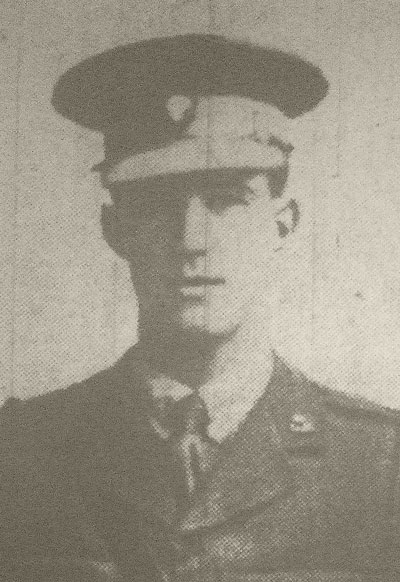Second Lieutenant James Tennent Smith
James Tennent Smith was born on 2 July 1896 at Galashiels, Selkirk, Scotland, the second of three children of woollen factory clerk William Tennent Smith and his wife Margaret Kennedy Smith. Between 1901 and 1911 the family moved to Belfast where they lived at 10 Irwin Avenue and James's father was employed as an accountant. They later moved to 22 Cyprus Gardens, Bloomfield. From June 1912 James was employed as an engineer (probably as an apprentice) in the Musgrave & Co. firm at Mountpottinger.
Smith enlisted in the North Irish Horse on 26 May 1915 (No.1629). He embarked for France with F Squadron on 17 November that year. He remained with the squadron until September 1917 when the 2nd North Irish Horse Regiment, which F Squadron had joined the previous year, was dismounted and the men transferred to the infantry. Smith, like most of the men, was transferred to the 9th (Service) Battalion, Royal Irish Fusiliers – renamed the 9th (North Irish Horse) Battalion – on 20 September 1917. He was issued regimental number 41189.
Soon after this he applied for a commission and left for the UK for training at an officer cadet battalion. On 26 June 1918 he was appointed 2nd lieutenant and posted to the 18th (County of London) Battalion, The London Regiment (London Irish Rifles).
Shortly afterwards he sought a transfer to the Royal Air Force. On 11 September he was posted to the No.1 School of Aviation. However war's end cut short his training and on 11 March 1919 he was posted back to the 18th Battalion, London Regiment.
Smith was released from service on 13 April 1919 and he resumed work at Musgrave and Co.
Around this time the Belfast Evening Telegraph reported that he had received an engineering appointment under the Soudan Government, "and sails this evening for Egypt. ... The best wishes of a large circle of friends go with him in his new sphere of activity in the Soudan."
By 1926 Smith had returned home. On 8 September that year he was appointed a clerk in the Agriculture Department of the Northern Ireland Civil Service.
Image from the Belfast Evening Telegraph kindly provided by Nigel Henderson, Researcher at History Hub Ulster (www.greatwarbelfastclippings.com).

